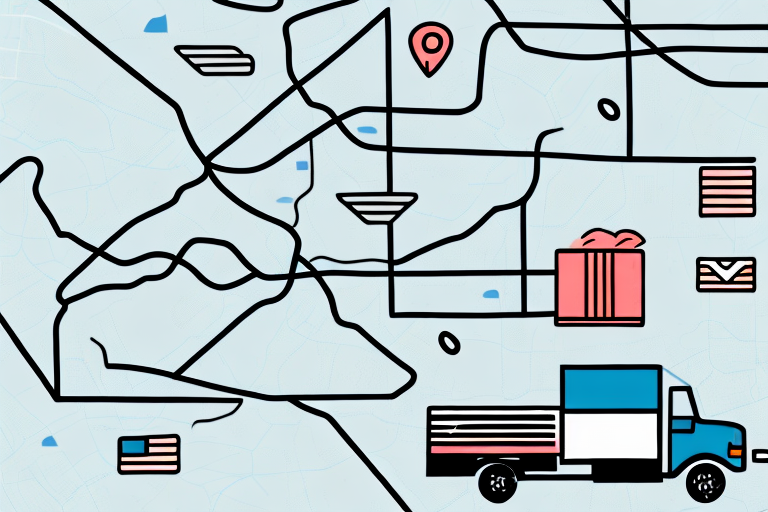Creating Custom UPS Labels for Your Business
When shipping products, creating custom UPS labels is crucial for accurately reflecting your brand image and complying with necessary regulatory requirements. This guide explores the importance of custom labels, the different types available, design best practices, and strategies to ensure your labels enhance your business's efficiency and brand recognition.
Importance of Custom UPS Labels for Your Business
Custom UPS labels play a vital role in distinguishing your products in the competitive market. They not only differentiate your offerings but also communicate essential information to your customers, such as tracking details and product specifications. Additionally, well-designed labels enhance brand recognition and contribute to a memorable unboxing experience for customers.
Differentiating Your Products
In a crowded marketplace, standing out is essential. Custom labels allow you to showcase unique branding elements like logos, colors, and typography, making your products easily identifiable.
Enhancing Brand Recognition
Consistent and professionally designed labels reinforce your brand identity, increasing recognition and trust among consumers. According to a study by MarketingProfs, 72% of consumers say product packaging influences their purchasing decisions.
Ensuring Compliance with Industry Regulations
Custom labels help ensure that your products meet industry-specific regulations. For instance, food products require nutritional information and allergen warnings, while healthcare products need dosage instructions and safety warnings. Proper labeling avoids legal issues and ensures smooth product distribution.
Types, Sizes, and Design of Custom UPS Labels
Types of UPS Labels
Choosing the right type of UPS label is essential for durability and functionality. The primary types include:
- Thermal Transfer Labels: Utilize a ribbon to transfer ink onto the label, providing long-lasting and durable labels suitable for shipping and product identification.
- Direct Thermal Labels: Use heat-sensitive paper that darkens when heated, ideal for short-term applications like receipts or tickets.
- Laser Labels: Designed for laser printers, these labels use toner to produce high-quality, professional graphics, often used for branding and marketing.
Choosing the Right Label Size and Shape
Selecting the appropriate size and shape ensures that the label fits your product and displays all necessary information clearly. While the standard UPS label size is 4” x 6”, smaller or uniquely shaped labels can be used for different products.
Consider the following when choosing label size and shape:
- Product Dimensions: Ensure the label size complements the product without overwhelming it.
- Information Display: Balance the amount of information to maintain readability.
- Design Aesthetics: The label should align with your brand's visual identity.
Designing Your Custom UPS Label
Effective label design is a combination of aesthetic appeal and functional information. Follow these best practices:
- Use High-Quality Graphics: Ensure logos and images are clear and high-resolution.
- Maintain Simplicity: Avoid clutter by prioritizing essential information.
- Legible Fonts: Use clear, easy-to-read fonts with appropriate sizes.
- Consistent Branding: Incorporate brand colors and elements consistently across all labels.
- Regulatory Compliance: Include all necessary legal information and follow industry-specific guidelines.
Creating and Printing Custom UPS Labels
In-House Label Printing
Printing custom UPS labels in-house provides control and flexibility. To do so effectively:
Required Equipment
- Compatible Printer: Ensure your printer supports thermal transfer, direct thermal, or laser labels depending on your choice.
- Label Design Software: Use software that is compatible with your printer and allows for custom designs.
Label Design Software
Select a label design software that offers a range of templates and customization options. Options like Adobe Illustrator or Canva provide robust design tools for creating professional labels.
Outsourcing Label Printing
Outsourcing label printing can save time and resources, allowing you to focus on core business activities. Benefits include access to specialized equipment and expertise, resulting in high-quality labels with faster turnaround times.
However, outsourcing may offer less control over the design process and could involve higher costs per label compared to in-house printing, especially for small batches.
Cost-Effective Strategies
- Bulk Ordering: Purchase labels in bulk to benefit from discounted pricing.
- Template-Based Design: Use pre-designed templates to reduce design costs and time.
- Appropriate Label Stock: Choose label materials that are cost-effective yet meet quality and compliance standards.
Ensuring Quality and Compliance
Regulatory Requirements
Shipping labels must adhere to various regulatory standards, which can vary by industry and destination. Key compliance areas include:
- Accurate Addressing: Clearly display both shipper and recipient addresses.
- Package Weight: Include the correct weight for shipping calculations.
- Hazardous Materials Warnings: Properly label any hazardous or sensitive items.
- Tracking Numbers: Ensure tracking information is present and scannable.
Consult authoritative sources like the Federal Highway Administration or UPS guidelines to ensure compliance.
Accuracy and Efficiency in Label Printing
Maintaining accuracy and efficiency involves selecting high-quality label stock, establishing standardized procedures, and regularly maintaining printing equipment.
- High-Quality Label Stock: Invest in durable materials that withstand shipping conditions.
- Standard Operating Procedures: Develop and follow consistent labeling protocols to minimize errors.
- Equipment Maintenance: Regularly service printers to prevent malfunctions and ensure consistent print quality.
Troubleshooting Common Printing Issues
Common issues during label printing include:
- Printer Jams: Prevent jams by loading labels correctly and using compatible label rolls.
- Poor Print Quality: Ensure proper printer settings and high-quality label stock.
- Incorrect Label Sizing: Use accurate templates and verify label dimensions before printing.
- Adhesive Problems: Select the right adhesive for your label material and application surface.
For detailed troubleshooting, refer to your printer’s user manual or consult with the manufacturer’s support resources.
Integrating Custom UPS Labels into Your Shipping Workflow
Streamlining the Shipping Process
Integrating custom UPS labels seamlessly into your shipping workflow enhances operational efficiency. Utilize labeling software that integrates with your existing shipping platforms, automating label generation and reducing manual entry errors.
Avoiding Common Mistakes
Ensure successful label integration by avoiding these common mistakes:
- Overcrowding Labels: Keep label designs clean to maintain readability and functionality.
- Ignoring Label Placement: Place labels in visible and accessible areas on packages to prevent damage and ensure easy scanning.
- Neglecting Regular Checks: Periodically review and update labeling processes to accommodate changes in regulations and business needs.
The Future of Custom UPS Labels
Emerging Technologies
The evolution of logistics technology is shaping the future of custom UPS labels. Innovations include:
- RFID-Enabled Labels: Enhance tracking capabilities through wireless identification.
- Smart Labels with Embedded Sensors: Monitor environmental conditions and detect tampering during transit.
- Augmented Reality Labels: Provide interactive customer experiences by integrating digital content with physical labels.
Trends to Watch
Stay ahead by adopting current trends such as:
- Eco-Friendly Materials: Utilize sustainable label materials to appeal to environmentally conscious consumers.
- Personalization: Create personalized labels that cater to specific customer preferences and enhance engagement.
- Advanced Printing Techniques: Implement cutting-edge printing methods for higher quality and more durable labels.
Conclusion
Creating custom UPS labels is integral to enhancing your business's branding, ensuring compliance, and streamlining shipping operations. By understanding the types of labels available, applying effective design principles, and integrating labels into your workflow, you can improve efficiency and boost customer satisfaction. Stay informed about emerging trends and technologies to continuously optimize your labeling strategy and maintain a competitive edge in the market.








